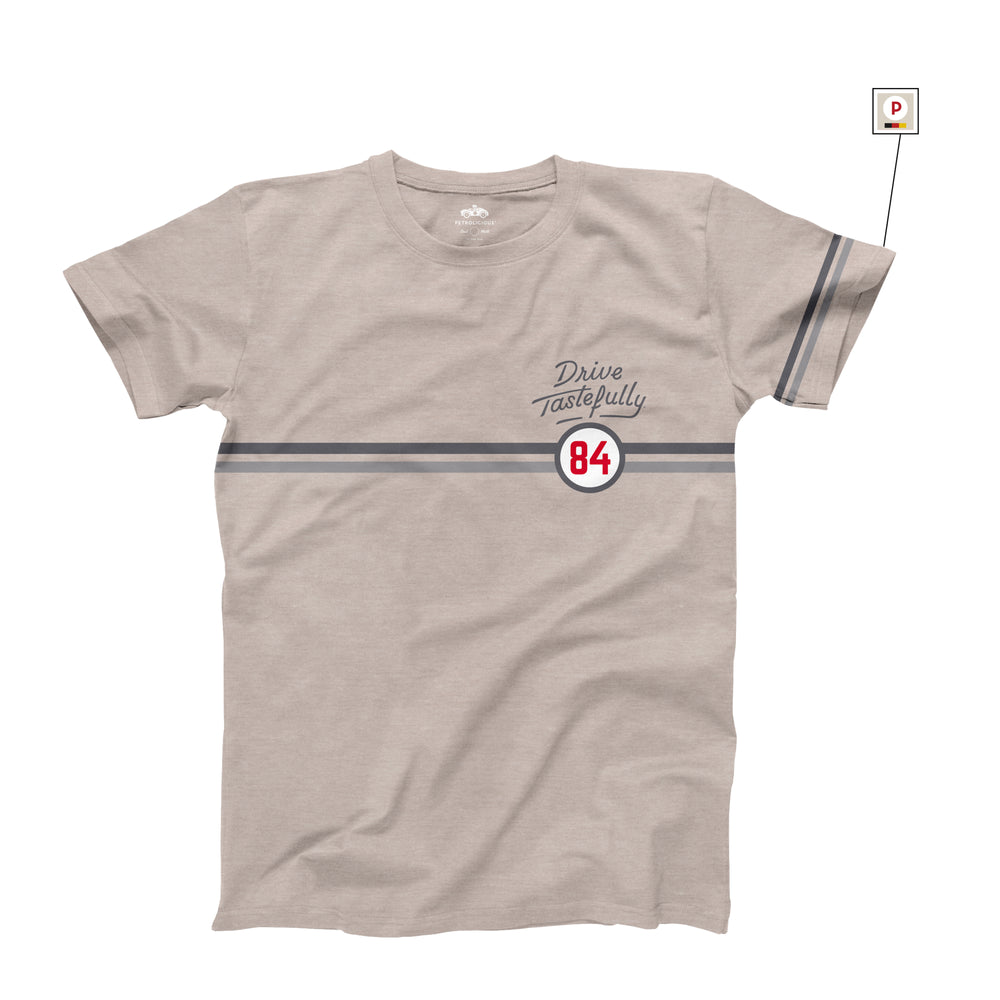



It was decided that entrants in the first Gordon Bennet Cup, which ran between Paris to Lyons (the idea was that subsequent races would be held in the country of the previous year’s victor), would be painted in colors based on the nationality of the car’s manufacturer. The Automobile Club de France supposedly assigned the first palette among the competitors, but over time shifts in both shade and outright color occurred. For instance, red originally belonged to the Americans before Italy’s Rosso Corsa was layered on the country’s dominant Grand Prix Alfa Romeos and later, Ferraris, and the British Racing Green we know today arrived after a few changes in shade over time, including a very Irish Shamrock Green when the Cup was held there instead of in England after David Napier finally dethroned the French in 1902 and brought the Gordon Bennet Cup to the UK.
But it was not until the late ‘60s and early ‘70s that corporate logos and slogans and goofy mascots more or less displaced the regal and unfussy national hues, and though some manufacturers have maintained the base color underneath the billboard-like paint jobs, looking back at the unadorned machines of the preceding period leaves us with pangs for this simple, but elegant age when cars and their countries were more closely linked. This is why we’ve come up with a new line of Tees in an homage to some of the sport’s most fruitful nationalities. Beyond the striping, we’ve also subtly incorporated the flags underneath the Petrolicious “P” on the sleeve tags. And as for the numbers, these are no random choices; with each meatball’s contents referencing some of the more well-known car and driver pairings from each locale.


Starting with no particular order, we have, of course, the American twin-colors of blue and white. Largely accredited to Briggs Cunningham’s pioneering of the now infamous blue racing stripes on his white Le Mans competitor, recall that the States’ first began with all red as their official scheme. It was not until much later that the blue and white combination was formally adopted, though almost every noteworthy American race car from the past wore it, including the GT40s, Shelby Mustangs and Cobras, and of course, Dan Gurney’s Eagles.


Next we come to what is likely the most iconic of them all, Italy’s Rosso Corsa. Motorsport historians largely agree that the deep red became one with Italy’s racing efforts in 1907, following an Itala’s win in the Peking to Paris event. Even more so than British Racing Green, this is the color that’s maintained the strongest hold on its country’s motorsport efforts. And it’s for good reason too, for what else is so enmeshed in racing and speed? Redlines, flames, shift lights at their most urgent calls for relief, the color is more or less a synonym for pushing the limits of what cars can accomplish.


It’s not very surprising that Germany would have two official colors, with both being sort of a lack thereof. Isn’t it fitting that the clinical and scientific approach to auto racing taken by the Germans results in the cars wearing either stark white or a metallic silver, which has been just plain old bare metal in the past? It’s disputed as to how the original Teutonic white gave way to silver (though Porsche, BMW, and some others still coat their cars in the original white), but the legend of weight savings through paint shavings definitely makes for a more interesting tale than what was likely the reality of Audi and Mercedes simply preferring the imposing look of raw metal. Whatever the truth is though, the chromatic hues of the DEU mean business. Please note that the sleeve flag has been aligned vertically for design purposes, and not mistakenly rotated.


Finally (though we will be releasing two more national racing color designs soon) we have the verdant British Racing Green. Tracing its origins back to the aforementioned Gordon Bennet Cup entrants of David Napier, the color has shifted around in brightness and saturation, and so the parallel stripes on our shirts reflect the evolution of the color into the heralded shade we know it as today. Forever tied to the great British racers like the Jaguar D-Type and Aston Martin DBR1, among countless others wearing the noble greens, this color is one of the few whose abbreviation, “BRG,” instantly conjures images of the Bentley Boys of the ‘20s, to Graham Hill tightly packed into his BRM P57 Formula 1 car, to modern day Aston Martins competing in the cutting edge of GT motorsport at the 24 Hours of Le Mans. Like the country it comes from, British Racing Green is steeped in heritage and it brings a certain stateliness to otherwise raw racing machinery.




















































